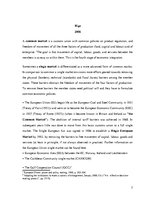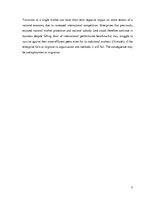A common market is a customs union with common policies on product regulation, and freedom of movement of all the three factors of production (land, capital and labour) and of enterprise. The goal is that movement of capital, labour, goods, and services between the members is as easy as within them. This is the fourth stage of economic integration.
Sometimes a single market is differentiated as a more advanced form of common market. In comparison to common a single market envisions more efforts geared towards removing the physical (borders), technical (standards) and fiscal (taxes) barriers among the member states. These barriers obstruct the freedom of movement of the four factors of production. To remove these barriers the member states need political will and they have to formulate common economic policies.
• The European Union (EU) began life as the European Coal and Steel Community in 1951 (Treaty of Paris (1951)) and went on to become the European Economic Community (EEC) in 1957 (Treaty of Rome (1957)) (when it become known in Britain and Ireland as "the Common Market"). The abolition of internal tariff barriers was achieved in 1968. In subsequent years little was done to move from this basic customs union to a full single market. The Single European Act was signed in 1986 to establish a Single European Market by 1992, by removing the barriers to free movement of capital, labour, goods and services (at least in principle, if not always observed in practice). Further information on the European Union single market can be found here.
• European Economic Area (EEA) between the EC, Norway, Iceland and Liechtenstein
• The Caribbean Community single market (CARICOM)
• The Gulf Cooperation Council (GCC)





